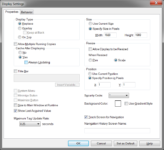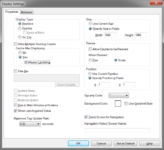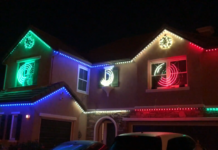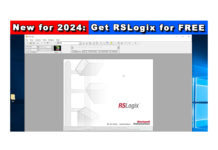
 Since the release of Intel’s Pentium line of processors, slowly loading RSView32 and ViewSE graphic displays have been a fairly rare issue.
Since the release of Intel’s Pentium line of processors, slowly loading RSView32 and ViewSE graphic displays have been a fairly rare issue.
But in situations where the PC is either over burdened or underpowered, the speed at which screens are displayed can become a problem.
It’s most often experienced as a several second delay from the press of a menu button to the loading of the selected screen.
And while many users believe they have to live with these delays, in most cases a simple work-around can be used to speed up display loading dramatically.
Caching Displays
By default, when the “display” command is executed the graphic display called must be loaded from the hard drive, displayed and animated.
If the issue being experienced is the time it takes to load and display the graphic, the simplest solution is to “cache” the display in RAM.
 One way to cache a display is to open it’s “displays settings” and change the “Cache After Displaying” setting from “No” to “Yes.”
One way to cache a display is to open it’s “displays settings” and change the “Cache After Displaying” setting from “No” to “Yes.”
However, this method only reduces the loading time after the screen has been displayed the first time.
Because of this, some users have taken to preloading all slow loading displays using a start-up macro.
This is done using the below command once for each screen you want to be preloaded into memory:
Display “My Screen Name” /Z
Always updating cached displays
 In some cases not only does the display take a long time to load, but it also takes a long time to animate or display updated values.
In some cases not only does the display take a long time to load, but it also takes a long time to animate or display updated values.
When this is the case, you may wish to not just cache the display, but also set it to always update.
This will not only keep the display in RAM, but it will continue to poll the tags on the display as well.
The downside is the continued polling of the tags on a screen not being displayed.
On a slow network you may not have the bandwidth needed to poll tags on the currently displayed screen as well as several cached displays.
If you decide to use this option you can enable it in the display settings menu for each graphic display, or you can use the below command in a start-up macro:
Display “My Screen Name” /ZA
One final note on caching displays
As discussed above, when you cache graphic displays in FactoryTalk View they stay in RAM even when not displayed.
One side effect of this is when you edit a display that is cached, you won’t actually see your changes until cached is cleared or the project is restarted.
Thankfully, Rockwell included a “Flashcache” command in View to help in these situations.
This command issued by itself will flush all displays from the cache.
However, you can also use this command to flush a single display from the cache. To do so, you just issue the command along with the display you would like to flush (Flushcache “My Screen Name”.)
I hope you’ve found the above information about resolving slow loading graphic displays helpful.
If you have a comment, question, or suggestion please feel free to share it with us by filling out the “post a comment or question” link below.
Until next time, Peace ✌️
If you enjoyed this content, please give it a Like, and consider Sharing a link to it as that is the best way for us to grow our audience, which in turn allows us to produce more content 🙂
Shawn M Tierney
Technology Enthusiast & Content Creator
Support our work and gain access to hundreds members only articles and videos by becoming a member at The Automation Blog or on YouTube. You’ll also find all of my affordable PLC, HMI, and SCADA courses at TheAutomationSchool.com.
- FactoryTalk Design Workbench First Look, CCW Comparison - December 19, 2025
- Drew Allen of Grace Technologies on Automation, Safety, and More (P256) - December 17, 2025
- Robotics in Warehouse Automation with Erik Nieves of Plus One Robotics (P255) - December 10, 2025

Discover more from The Automation Blog
Subscribe to get the latest posts sent to your email.




